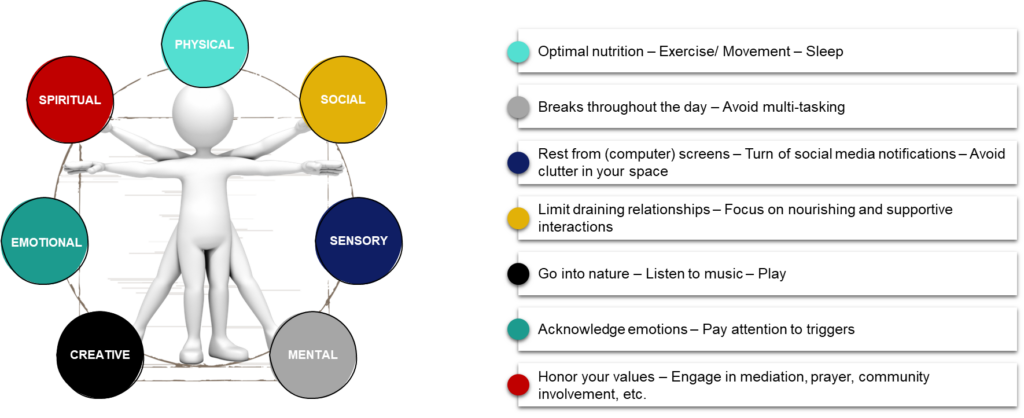Pushing yourself beyond exhaustion. It is a surefire way to burnout, and as leaders, we’ve all been there. That point where it’s difficult to fall asleep and then equally difficult to get out of bed, the point where you feel so drained that just the idea of one more problem to solve makes you think about committing murder (and you don’t even feel guilty just a mild concern about hiding the body). How do you manage leadership fatigue?
Over time, I’ve learned that going past this point of exhaustion is not productive. I’ve learned that If I want to bring my A-game, I need to make sure that I allow my body, mind, and soul to rest and recover when called for. Once I mastered that, the question became how do I make sure that I teach my (up-and-coming) leaders the same thing? How do I instill in them the value of rest and recovery? How do I make sure to not contribute to being the source of their energy drain?
Understanding Rest and Recovery
In her TEDxAtlanta talk, The Real Reason Why We are Tired and What to Do about It, dr. Saundra Dalton-Smith explains that sleep and rest are not the same and that we need more than sleep in order to recover. According to her “We go through life thinking we’ve rested because we have gotten enough sleep — but in reality, we are missing out on the other types of rest we desperately need. The result is a culture of high-achieving, high-producing, chronically tired, and chronically burned-out individuals. We’re suffering from a rest deficit because we don’t understand the true power of rest.”
We use seven types of energy (see graph below), and we need to rest and recover each one. Understanding this and tapping into each area of rest will keep us at optimum performance capacity and prevent that dreaded leadership burnout.

Show not Tell
Understanding rest & recovery and implementing the principles in your own life is the first step. Not only for your own well-being but also because you will be modeling the behavior you want your (future) leaders to exhibit. I used to go on and on about the need for rest and time away from work to recharge, but my employees would regularly find me working at the office till almost midnight and see my car at the office most weekends. A classic case of “do what I tell you, not what I do”. As we all know, this type of behavior does not create trust, thus making it extremely difficult for people to follow the verbal directions given. So number one in getting your team to properly rest & recover is to model for them the behavior that you want them to exhibit. Prevent leadership burnout for yourself, and they will follow.
Rest and Recovery in Leadership
The second important aspect is to actively listen to your employees when they are talking about feeling tired, feeling drained, lacking energy, etc. As leaders, we need to not assume that we know which area they are lacking rest & recovery in. We cannot jump to conclusions and start giving advice (or even worse, giving mandates) on the action they need to take in that particular area we identified. There is nothing worse than a boss telling you that you need proper sleep and exercise while you are being emotionally drained because of dealing with a bullying co-worker. Not only is the advice absolutely not helpful, but it also cements your belief that this boss has absolutely no clue what is happening on the work floor, which will make it that much more difficult for you to fight for your rights. Instead of helping, that boss just turned into another social and emotional drain.
So please practice active listening when engaging in the topic of fatigue with your employees. Let them take the lead in analyzing and identifying which area(s) they are lacking energy in and provide support (not your biased opinion) in how they need to tackle achieving more rest & recovery in the area(s) they identified.
Proper rest and recovery are essential for all of us. If we as leaders want productive employees who can tap into their full creative talents at work, we need to invest in their rest and recovery and support them in establishing habits that work for them and, thus, for the company.
Still struggling with preventing leadership burnout? Let’s talk.
